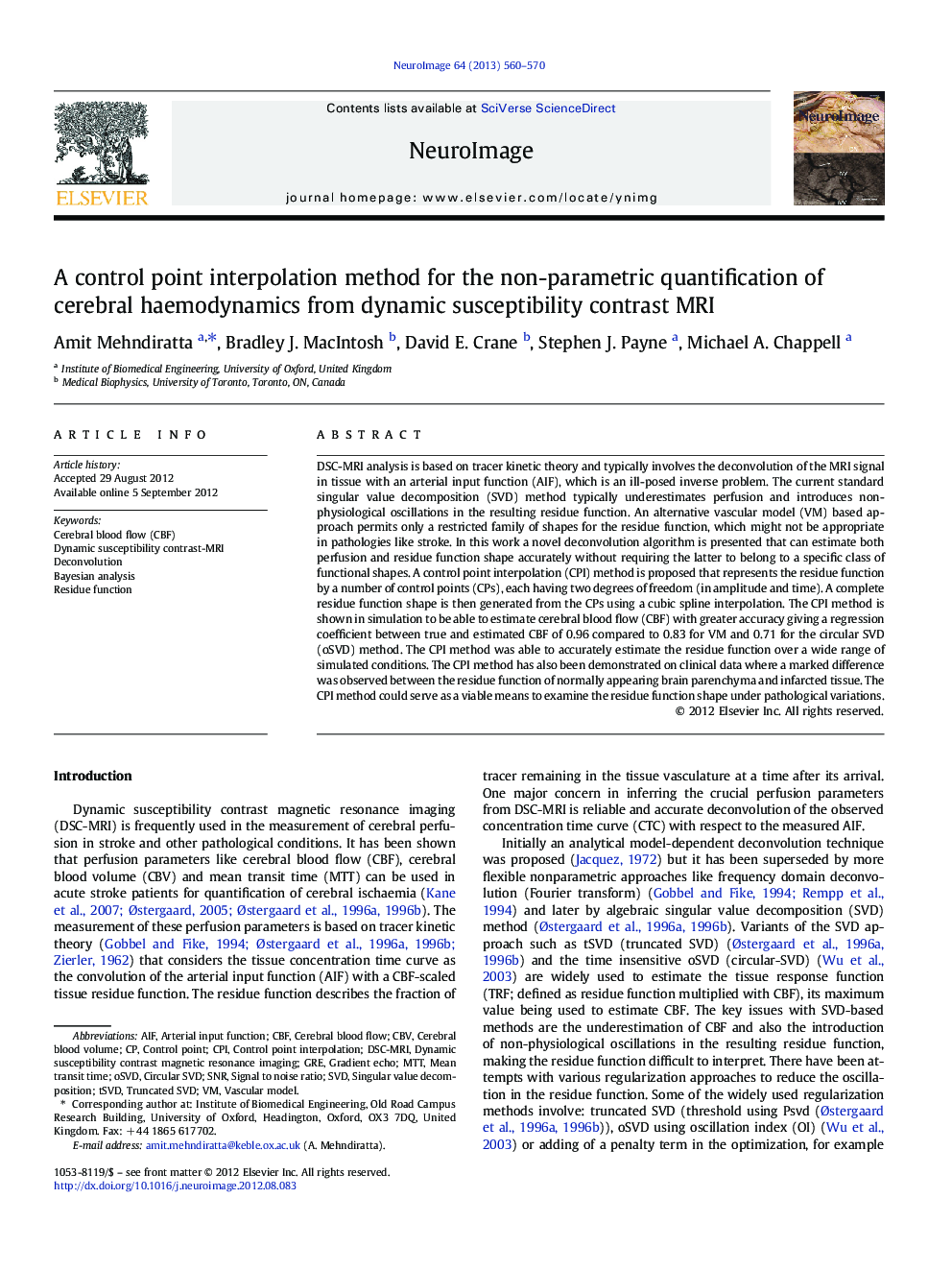| کد مقاله | کد نشریه | سال انتشار | مقاله انگلیسی | نسخه تمام متن |
|---|---|---|---|---|
| 6031041 | 1580940 | 2013 | 11 صفحه PDF | دانلود رایگان |

DSC-MRI analysis is based on tracer kinetic theory and typically involves the deconvolution of the MRI signal in tissue with an arterial input function (AIF), which is an ill-posed inverse problem. The current standard singular value decomposition (SVD) method typically underestimates perfusion and introduces non-physiological oscillations in the resulting residue function. An alternative vascular model (VM) based approach permits only a restricted family of shapes for the residue function, which might not be appropriate in pathologies like stroke. In this work a novel deconvolution algorithm is presented that can estimate both perfusion and residue function shape accurately without requiring the latter to belong to a specific class of functional shapes. A control point interpolation (CPI) method is proposed that represents the residue function by a number of control points (CPs), each having two degrees of freedom (in amplitude and time). A complete residue function shape is then generated from the CPs using a cubic spline interpolation. The CPI method is shown in simulation to be able to estimate cerebral blood flow (CBF) with greater accuracy giving a regression coefficient between true and estimated CBF of 0.96 compared to 0.83 for VM and 0.71 for the circular SVD (oSVD) method. The CPI method was able to accurately estimate the residue function over a wide range of simulated conditions. The CPI method has also been demonstrated on clinical data where a marked difference was observed between the residue function of normally appearing brain parenchyma and infarcted tissue. The CPI method could serve as a viable means to examine the residue function shape under pathological variations.
⺠We modelled tissue residue function by a number of control points (CPs). ⺠Each CP has two degrees of freedom (in amplitude and time). ⺠Greater accuracy in CBF estimation is observed in simulations. ⺠Smooth and accurate residue function is observed over a range of simulated conditions. ⺠Substantial difference is observed in residue function of normal and infarcted tissue.
Journal: NeuroImage - Volume 64, 1 January 2013, Pages 560-570